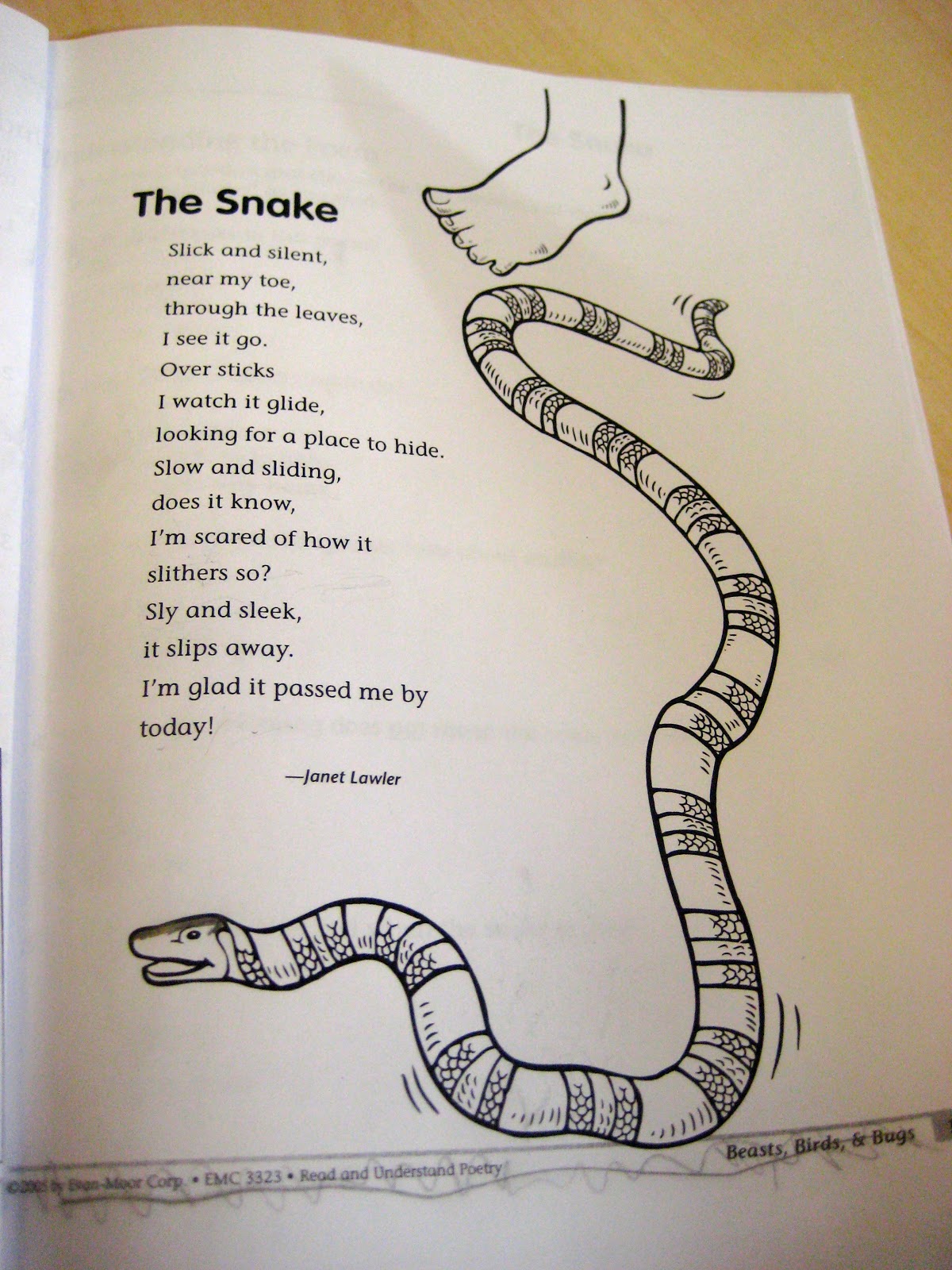The snake poem has captivated readers and poets alike, drawing them into a world where the natural and the mystical intertwine. This poem is not merely a literary piece; it is a reflection of humanity's complex relationship with nature, symbolism, and the deeper meanings that lie beneath the surface. The imagery of the snake, often associated with transformation and rebirth, serves as a powerful metaphor that resonates with our own experiences and emotions. As we delve into the layers of this enigmatic poem, we discover the profound insights it offers on themes such as fear, beauty, and the cycle of life.
Exploring the snake poem invites us to consider the dualities present in nature and within ourselves. Snakes, revered in some cultures and feared in others, symbolize the paradox of existence. They remind us that beauty and danger often coexist, urging us to confront our fears while embracing the transformative powers within us. The language of the snake poem captures this essence, weaving a narrative that speaks to both the heart and the mind. Through vivid imagery and evocative metaphors, the poet invites us to reflect on our connection with the natural world and the lessons it imparts.
As we journey through the snake poem, we are prompted to ask ourselves: What does the snake symbolize in our lives? How can we harness its transformative energy to navigate our challenges? The answers may not be simple, but they are certainly worth exploring. In this article, we will dissect the snake poem, examining its themes, symbolism, and the emotional responses it evokes. We will also explore the poet's biography and the context in which this masterpiece was created, shedding light on the creative process and inspirations behind the words.
What is the Historical Context of the Snake Poem?
The origins of the snake poem can be traced back to various literary traditions that often incorporate nature and symbolism. Poets throughout history have drawn inspiration from snakes, using them as metaphors for transformation, danger, and wisdom. The snake's ability to shed its skin serves as a powerful symbol of renewal, making it a fitting subject for poets who wish to explore themes of change and rebirth.
Who is the Poet Behind the Snake Poem?
The snake poem is often attributed to a poet whose works explore the intersection of nature and human experience. While many poets have penned their own versions of snake poems, one notable figure is D.H. Lawrence. His poem "The Snake" features a striking encounter between the speaker and a snake at a water trough, emphasizing the beauty and grace of the creature while questioning societal norms and instincts.
What are the Key Themes in the Snake Poem?
- Transformation: The snake’s shedding of skin symbolizes the ability to change and grow.
- Fear and Beauty: The poem juxtaposes fear of the snake with its inherent beauty, prompting readers to confront their biases.
- Nature’s Wisdom: The snake represents the wisdom of nature, encouraging a deeper connection with the natural world.
- Duality of Existence: The poem reflects the coexistence of beauty and danger in life.
What Does the Snake Represent in Literature?
In literature, snakes often symbolize a range of concepts, from temptation and sin to healing and transformation. The snake's ability to navigate both land and water further enhances its representation of duality. In many cultures, snakes are revered as powerful beings, embodying life, death, and rebirth. The snake poem taps into these rich literary traditions, using the creature as a conduit for exploring complex emotional and philosophical themes.
How Does the Snake Poem Evoke Emotion?
The snake poem’s language and imagery evoke a visceral emotional response in readers. The vivid descriptions of the snake and its surroundings create a palpable tension that mirrors the speaker's internal conflict. As readers navigate the poem, they are drawn into the speaker’s world, experiencing a spectrum of emotions—from fear and awe to reverence and introspection. The interplay of emotion and imagery is what makes the snake poem a powerful work of art.
Can the Snake Poem Be Interpreted Differently?
As with many literary works, the snake poem is open to interpretation. Different readers may glean varying meanings based on their personal experiences and beliefs. Some may view the snake as a symbol of danger, while others may see it as a representation of renewal and transformation. This multifaceted nature of the poem is what makes it enduring and impactful, allowing it to resonate across generations and cultures.
What Insights Can We Gain from the Snake Poem?
The insights gleaned from the snake poem extend beyond its immediate themes and imagery. It prompts us to reflect on our own lives, encouraging us to confront our fears and embrace change. By engaging with the poem, we are reminded of the beauty and complexity of the natural world, as well as our place within it. The snake poem serves as a powerful metaphor for the human experience, inviting us to seek transformation and understanding in our own journeys.
Conclusion: Embracing the Wisdom of the Snake Poem
In conclusion, the snake poem holds a mirror to our lives, urging us to explore the depths of our emotions and the beauty of transformation. Through its rich symbolism and evocative language, it invites us to confront our fears and embrace the complexities of existence. The snake, as a literary figure, serves as a reminder of the dualities present in nature and within ourselves. As we continue to engage with the snake poem, we are encouraged to harness its wisdom and apply its lessons to our own lives.




